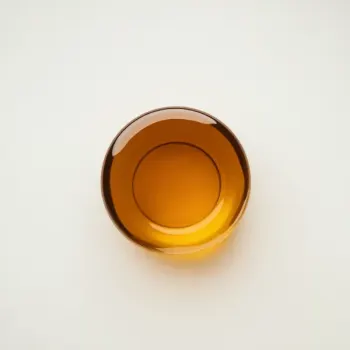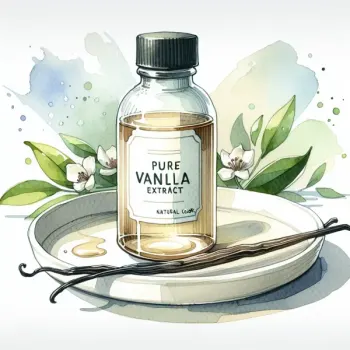Maple syrup and pure vanilla extract are distinct natural sweeteners with unique flavors and culinary uses. Maple syrup is a syrupy sweetener with a caramel-like taste, ideal for baked goods and desserts. Vanilla extract has a sweet, floral aroma, essential for enhancing flavors in cakes, custards, and beverages.

Maple syrup is a natural sweetener made from the sap of maple trees. It is commonly used in a variety of dishes for its distinctive, rich flavor and sweetness.

Pure vanilla extract is a concentrated liquid made by macerating and percolating vanilla beans in a solution of alcohol and water. It is a key flavoring in many baked goods and desserts.
Maple syrup and pure vanilla extract differ in flavor, texture, and usage. Maple syrup is thick and syrupy with a sweet, caramel-like taste, while vanilla extract is liquid and has a sweet, floral aroma. Maple syrup is tapped from trees and boiled down, whereas vanilla extract is made by soaking vanilla beans. Both are natural sweeteners, but they are used in different ways in the kitchen.

Your ultimate Recipe Box, Meal Planner, and Cooking Class all in one
In baked goods like pancakes, waffles, and oatmeal cookies, maple syrup adds moisture and a unique sweetness. It can create a subtle caramelized crust when used in baking. Vanilla extract is ideal for cakes, muffins, and custards, providing a rich aroma and complex flavor profile. It enhances the overall taste of sweet baked goods without overpowering other flavors.
Maple syrup can be used to sweeten coffee, tea, and cocktails, contributing a smooth, rich flavor that pairs well with warm spices. A few drops of vanilla extract can transform hot chocolate, smoothies, and milkshakes, adding a comforting and familiar taste that complements many types of beverages.
Maple syrup shines in desserts like pecan pie, maple-glazed donuts, and ice cream where its flavor can stand out or blend harmoniously with other sweet elements. Vanilla extract is a must in classic desserts such as crème brûlée, vanilla pudding, and frosting, where it provides a delicate and indispensable flavor note.
Maple syrup is high in sugar and should be used in moderation. Pure vanilla extract has negligible nutrients but is also used in much smaller quantities.
| Nutrient | Maple Syrup ( per Tablespoon ) | Pure Vanilla Extract ( per Tablespoon ) |
|---|---|---|
| Fat | 0g | 0g |
| Sodium | 2mg | 0mg |
| Calcium | 20mg | 0mg |
| Protein | 0g | 0g |
| Calories | 52 | 12 |
| Carbohydrates | 13.4g | 0.53g |
Maple syrup can be used as a flavor substitute in some recipes, but it will impart a different taste and additional sweetness. The texture and moisture content of your dish may also be affected.
Maple syrup contains more nutrients than pure vanilla extract, but it is also higher in calories and sugars. Vanilla extract is used in smaller amounts and does not significantly contribute to the nutritional content of a dish.
No, maple syrup has a distinct sweet, buttery flavor with caramel notes, while vanilla has a sweet, floral aroma. They are not taste equivalents.
You can use vanilla extract to add flavor, but it will not replicate the sweetness or consistency of maple syrup. You may need an additional sweetener.
To substitute maple syrup for vanilla extract, start with a small amount and adjust to taste, keeping in mind the extra sweetness and liquid volume it adds to the recipe.